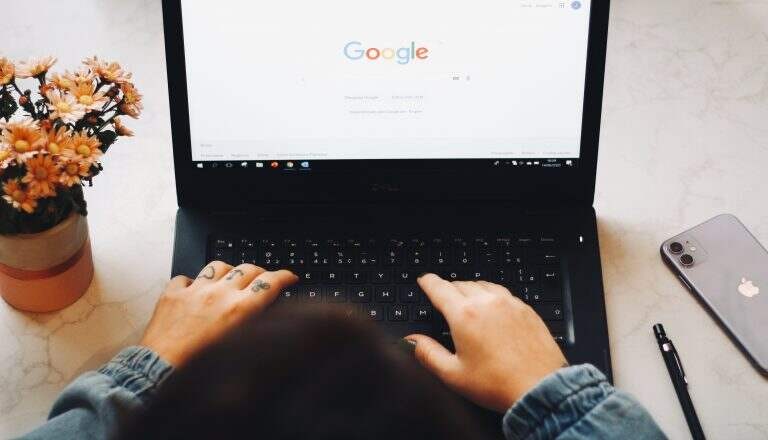The bid strategy learning phase can vary, typically lasting from one week to one month, as Google gathers performance data to optimize campaign delivery after a new launch or update. If you’re looking to expedite this process and ensure your advertising campaigns are as cost-effective as possible, learns.edu.vn provides expert strategies and insights to help you navigate this crucial period. By understanding the factors that influence the learning phase and implementing proven techniques, you can accelerate your campaign’s optimization.
1. Understanding the Google Ads Learning Phase
The Google Ads learning phase refers to the period during which a campaign collects performance data to adapt ad delivery and optimize results. This phase is essential for campaigns using smart bidding strategies, as it allows the platform to identify the most effective contexts (time of day, location, targeting) for ad performance.
1.1. Key Aspects of the Learning Phase
During the learning phase, Google Ads experiments with various ad placements and targeting options to determine the most effective strategies. This involves:
- Running ads in different contexts to gather performance data.
- Analyzing user responses, such as clicks and conversions, to refine targeting.
- Making real-time adjustments based on user behavior to improve ad performance over time.
 Person working on bid strategy learning
Person working on bid strategy learning
1.2. Factors Triggering the Learning Phase
The learning phase is initiated by specific actions, including:
- New Strategy: Creating or reactivating a bid strategy.
- Setting Change: Altering bid strategy settings, such as budget, target CPA, or target ROAS.
- Composition Change: Adding or removing campaigns, ad groups, or keywords.
2. How Long is the Learning Phase for Google Ads?
The learning phase for Google Ads typically lasts between one week and one month. However, the exact duration is influenced by various factors related to the campaign’s structure and performance.
2.1. Factors Affecting the Duration of the Learning Period
According to Google, the duration of the learning phase depends on three primary elements:
- Conversion Quantity: The number of conversions acquired by your campaigns.
- Conversion Cycle Length: The time it takes for a click to result in a conversion.
- Bid Strategy Variation: The specific bid strategy used, such as Maximize Conversions or Maximize Conversion Value.
2.2. The Role of Conversions in the Learning Phase
The number of conversions your campaigns achieve significantly impacts the duration of the learning phase. More conversions generally lead to a quicker learning process, as the algorithm has more data to work with.
For instance, if a campaign consistently generates a high volume of conversions, the learning phase may be completed in as little as one week. Conversely, a campaign with fewer conversions may take up to a month to fully optimize.
2.3. Conversion Cycle Length and Its Impact
The length of your conversion cycles also plays a crucial role. Shorter conversion cycles enable the algorithm to adapt more quickly, as it receives feedback sooner.
For example, a campaign promoting a product with an immediate purchase cycle will likely have a shorter learning phase than one promoting a high-consideration item with a longer decision-making process.
2.4. Influence of Different Bid Strategies
Different bid strategies affect the learning phase differently. Some strategies, like Maximize Conversions, require more data and time to optimize effectively compared to manual bidding strategies.
- Maximize Conversions: Aims to get the most conversions for your budget.
- Maximize Conversion Value: Aims to get the highest conversion value for your budget.
- Manual CPC: Does not undergo the learning phase.
3. Common Reasons for a Longer Learning Phase
Several factors can extend the learning phase, hindering your campaign’s ability to optimize quickly. Understanding these factors is crucial for addressing them effectively.
3.1. Lack of Initial Data
New campaigns or those with limited historical data often require an extended learning phase. The algorithm relies on data for optimization, and without a substantial dataset, it may take longer to understand the best approach.
3.2. Frequent or Numerous Changes
Making frequent changes to your campaign, such as adjusting the budget, targeting, ad copy, or bid strategies, can prolong the learning phase. Each change resets the learning process, delaying the algorithm’s ability to stabilize.
3.3. Competitive Niches
Highly competitive industries or densely saturated ad spaces may experience an extended learning phase. The system has to compete for visibility and adjust bid strategies to maximize ad performance in these environments.
4. Expert Strategies to Speed Up the Learning Phase
To accelerate the learning phase and improve your campaign’s efficiency, consider implementing these expert strategies.
4.1. Start with Manual Bidding
Before launching an automated bidding campaign, gather preliminary data with manual bidding. This allows you to collect initial performance data without relying on the algorithm’s learning process.
4.1.1. Gathering Initial Data
Starting with a manual bidding strategy allows you to collect data on which keywords, ad creatives, and targeting options perform best. Once you have gathered around 15-30 conversions in the past 30 days, you can transition to a smart bidding strategy.
4.2. Minimize Frequent Changes
Avoid making frequent changes to your campaign, as each change resets the learning process. Allow the algorithm time to accumulate substantial data and make adjustments on its own.
4.2.1. The Impact of Frequent Changes
Making too many changes can negatively impact your campaign by reducing how often your ads are served. It can also make it difficult to determine which changes are actually driving performance improvements.
4.2.2. Determining How Long to Wait Before Making Changes
The amount of time you should wait before making changes depends on the daily budget of your campaign and how quickly data comes in. Ensure adequate time has passed and enough data has accumulated before making adjustments.
4.3. Leverage Historical Data
Campaigns with access to extensive historical data offer the algorithm a wealth of information to expedite the learning process.
4.3.1. Using Historical Data for Optimization
Leveraging historical data provides the algorithm with insights into what has previously worked, facilitating quicker adjustments and optimizations. For example, a business that has been running Google Ads campaigns for years possesses a rich dataset that can be used to inform current strategies.
4.4. Ensure Robust Conversion Tracking
Comprehensive data leads to faster and more accurate adaptation and fine-tuning of campaigns. Accurate and detailed conversion action tracking helps feed the AI with data to implement strategies aligned with your goals, ultimately improving conversion rates.
4.4.1. The Importance of Conversion Tracking
Detailed conversion tracking provides the AI with valuable data to optimize bidding strategies and improve overall campaign performance. This includes tracking various conversion actions, such as form submissions, phone calls, and purchases.
4.5. Maintain Consistency in Campaign Elements
A campaign that maintains consistency in its elements, such as ad creatives, target audience, and budget allocation, helps the system accumulate accurate data, shortening the learning phase duration.
4.5.1. The Role of Landing Pages
Ensuring that your landing pages align with ad content and relevant search terms ensures a cohesive user journey, improves ad quality, and enhances user engagement, which the algorithm recognizes.
4.6. Implement Preliminary Testing Phases
A preliminary testing phase with a smaller budget helps with data collection without significant algorithm adjustments. This allows you to gather enough data to optimize the campaign before committing to a substantial budget.
4.6.1. Launching New Products
When launching a new product, a brief test phase with a limited budget can help gather enough data to optimize the campaign before committing to a substantial budget.
4.7. Align Optimization with CPA-Focused Goals
Strategically align your optimization with cost-per-acquisition (CPA) goals to guide the system toward more effective performance. Fine-tune bidding and ad content to optimize for CPA, ensuring that your ad spend is directed toward acquiring customers at your set cost target.
5. In-Depth Look at How the Google Ads Learning Phase Works
Campaigns that use an automated bidding strategy utilize AI to set bids based on the likelihood of a click or conversion. The AI needs to learn how to best bid in ad auctions, which takes time and testing.
5.1. Learning Phase Dynamics
During this phase, the system explores the performance patterns of your ads in live auctions. It looks at user responses, such as clicks or conversions, and refines who your ads are shown to.
5.2. Algorithmic Adaptation
Google’s machine learning algorithm optimizes your ad delivery to enhance performance. It learns which audience, timing, or context works best for your ad, refining your campaign’s targeting.
5.3. Impact on Ad Delivery
The learning phase significantly influences who sees your ads and when. This period can lead to fluctuations in your performance metrics, impacting your campaign’s initial reach, costs, and efficiency.
5.4. Real-Time Adjustments
Throughout this phase, the algorithm makes continuous adjustments based on user behavior, seeking to improve ad performance, leading to a more refined, optimized, and effective ad delivery over time.
6. Post-Learning Phase Learning
Even when the bid status no longer shows “Learning,” Google Ads continues to refine its algorithms, continuously learning from user behavior and adjusting ad delivery strategies for ongoing optimization. The data set is more extensive at this stage, so the changes won’t be as noticeable.
6.1. Continuous Optimization
Google’s algorithm continues to optimize based on the data it collects, even after the learning phase has ended. This ensures that your campaign remains effective over time.
7. The Benefits of Understanding the Learning Phase
Understanding the Google Ads learning phase provides several key benefits, including improved campaign performance, cost-effectiveness, and strategic finesse.
7.1. Improved Campaign Performance
By understanding how the learning phase works, advertisers can make informed decisions about campaign settings, bidding strategies, and optimization techniques. This results in improved campaign performance and better overall results.
7.2. Cost-Effectiveness
A faster learning phase means a more cost-effective campaign. By implementing strategies to speed up the learning phase, advertisers can reduce wasted ad spend and maximize their return on investment.
7.3. Strategic Finesse
Navigating the learning phase with strategic finesse not only optimizes ad delivery but also ensures campaigns are aligned with evolving market dynamics. This sets the stage for sustained success and improved performance in your ads across the Google search ecosystem and beyond.
8. How to Check the Learning Phase Status
To check the status of your PPC campaign’s learning phase, navigate to the bid status indication within your campaign details.
